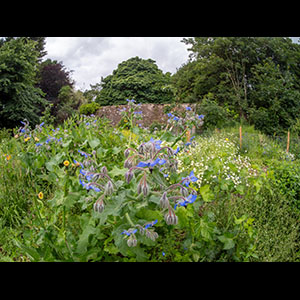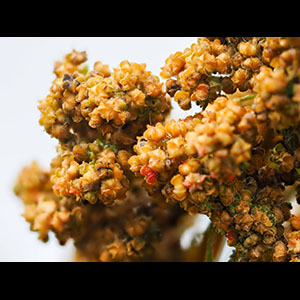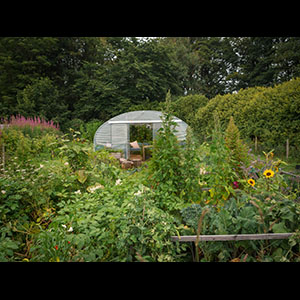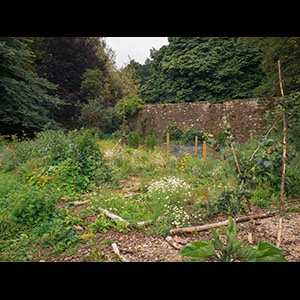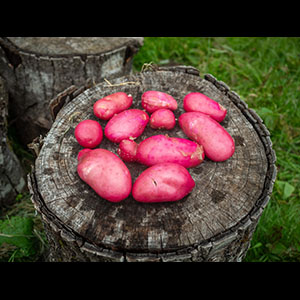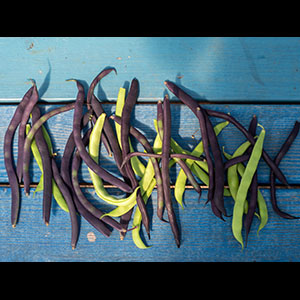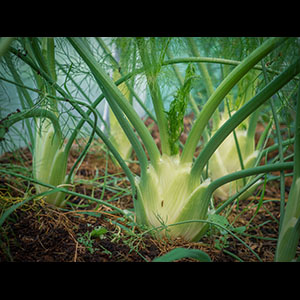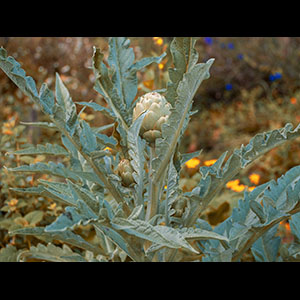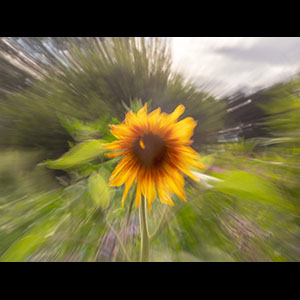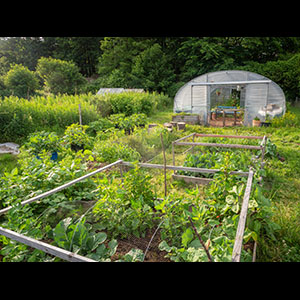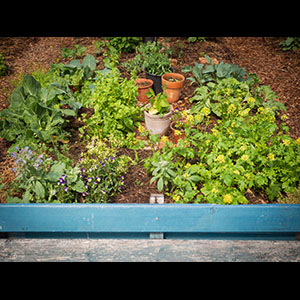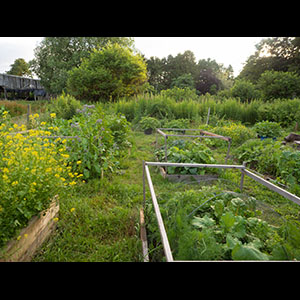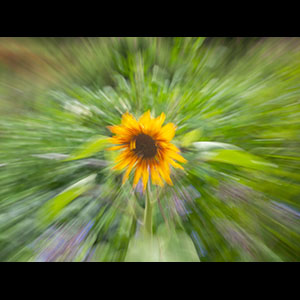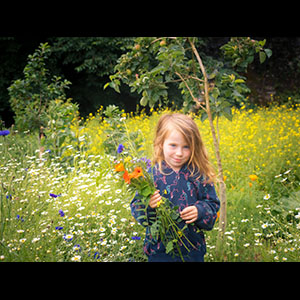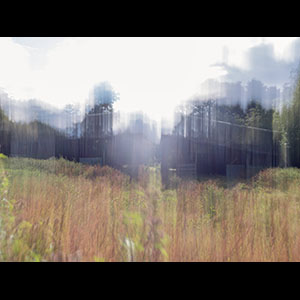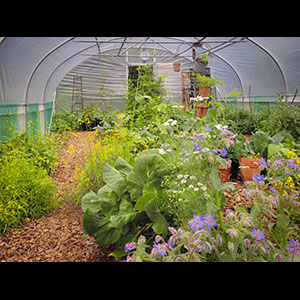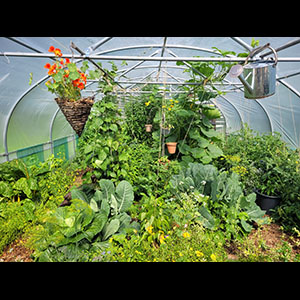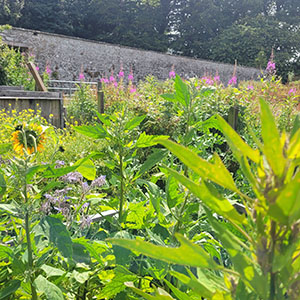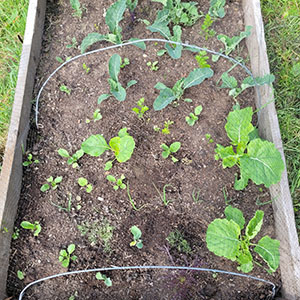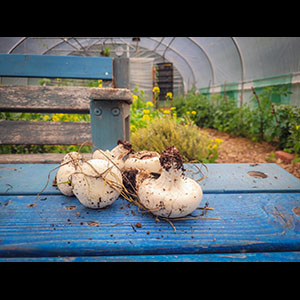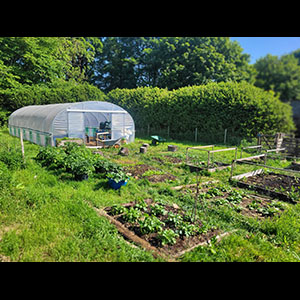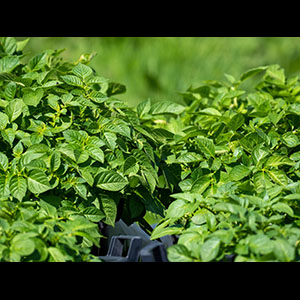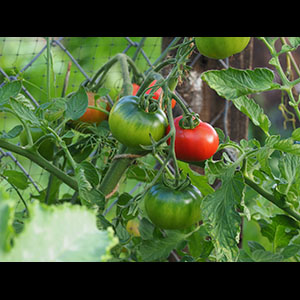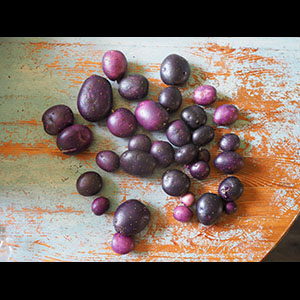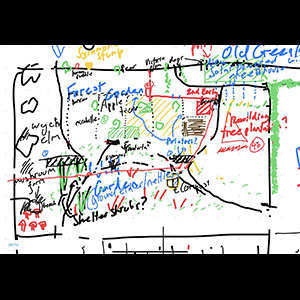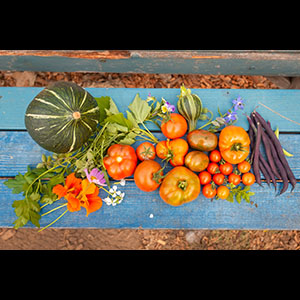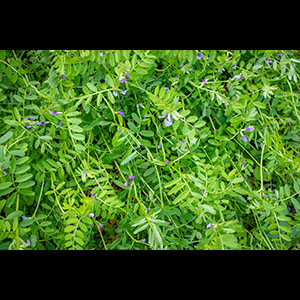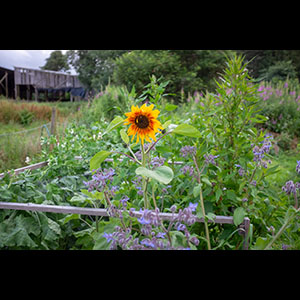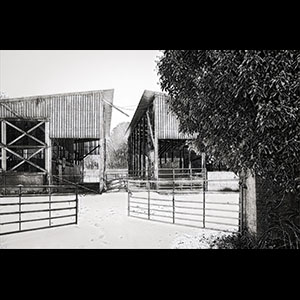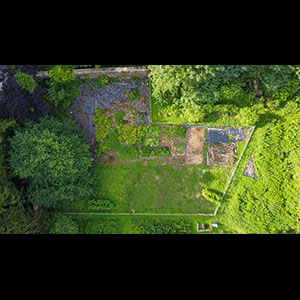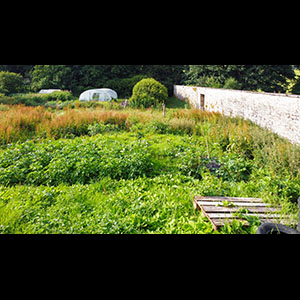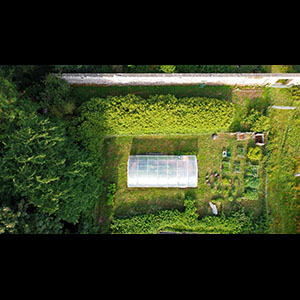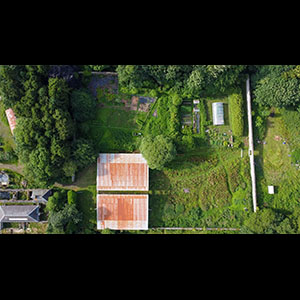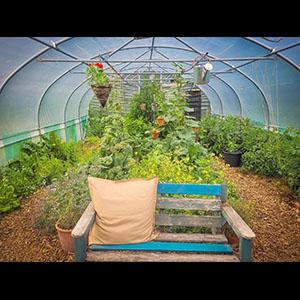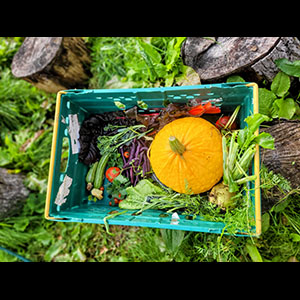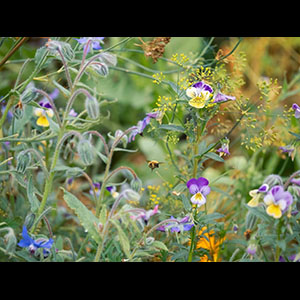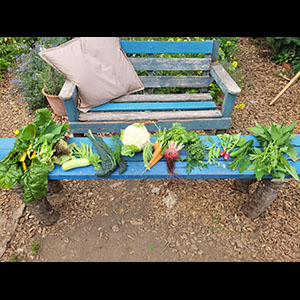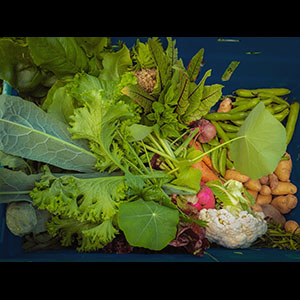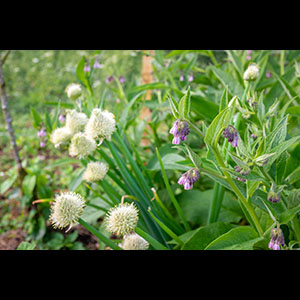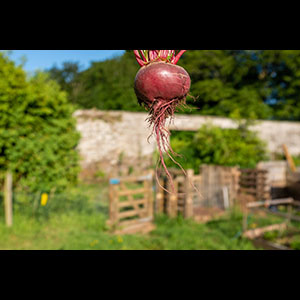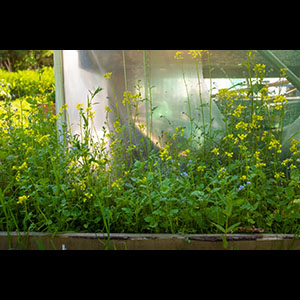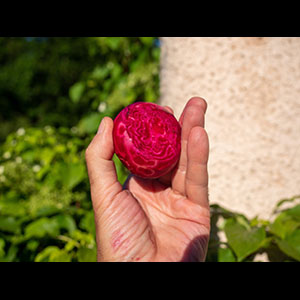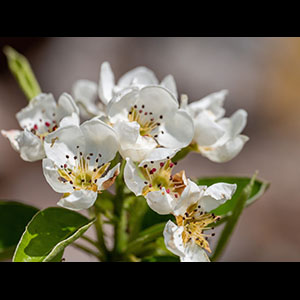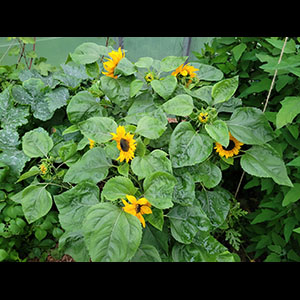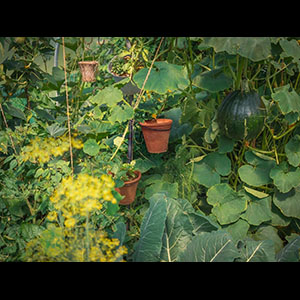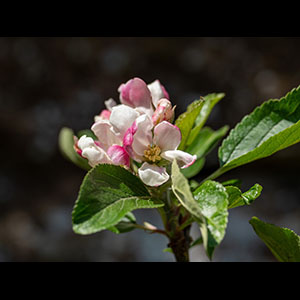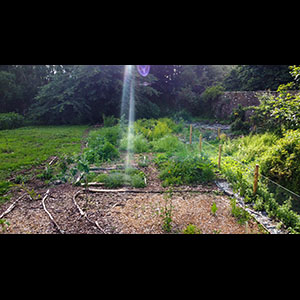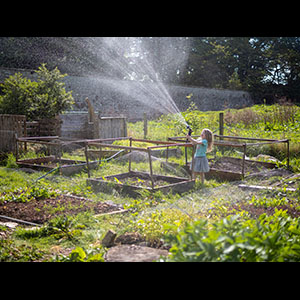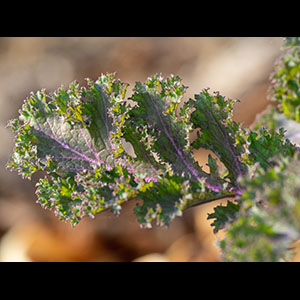“Though the problems of the world are increasingly complex, the solutions remain embarrassingly simple”
Bill Mollison
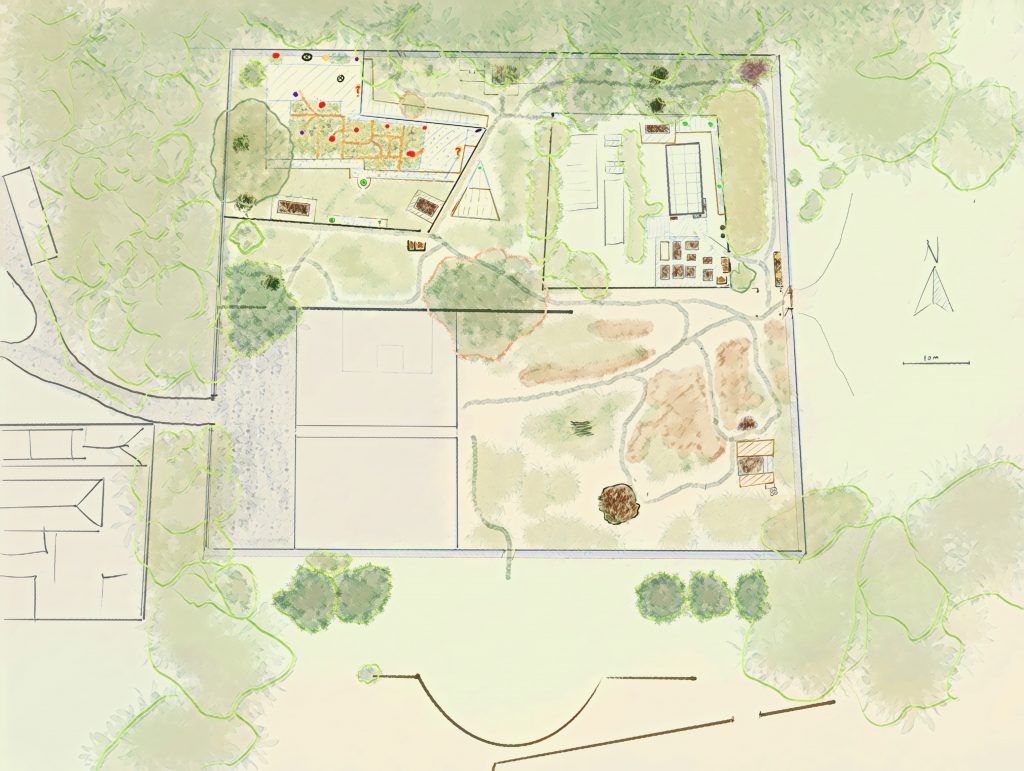
Current overview of the Bamff Walled Garden Project as of 2023 (Dave Maric)
As rewilding often commandeers land that has previously been compromised by intensive, unsustainable and ecologically damaging agriculture, the obvious question is then: how are we to feed ourselves, especially as the climate and biodiversity crises progress?
Since 2022 I have been gradually planning and developing a long neglected roughly 1.6 acre walled garden at Bamff, which until 2021 was largely dominated by cattle and sheep farming for half a century. This has led to me becoming a student of permaculture, and applying its principles and techniques there as much as possible.
The variety of produce being grown in the garden is constantly expanding, with an emphasis on experimentation and resilience.
Permaculture as a subject or philosophy goes further than simply exploring how we can grow our food, as it also tackles the activities that take place on the peripheries of our gardens, veg beds or greenhouses – into and around our homes and then beyond into the community. Hence the ambitions of the walled garden exceeds simply the exploration of plant/veg growing, serving also as inspiration for the myriad possibilities extending beyond its boundaries.
The Bamff Walled Garden aspires to be a resource for:
- Producing high quality, chemical free food, for local events and community food projects whenever possible.
- Strengthening regional connections through hosting regular events – linking with other like-minded food-growing and rewilding projects and resilient rural initiatives across the region.
- Nurturing soil and ecosystem health – protecting and enhancing soil ecology within the garden and its surrounding landscape, ensuring long-term fertility and biodiversity.
- Exploring climate-resilient cultivation – developing forest gardening, agroforestry, and perennial planting for sustainable food foraging and wildlife-rich habitats.
- Expanding into multi-faceted agriculture – growing not only food but also plant-based textiles, natural dyes, fibres, and other materials for sustainable crafts and local enterprise and education.
- Cultivating resources for rewilding and creativity – producing willow coppice and other species for our own and others’ rewilding projects, as well as for artistic and structural uses.
- Hosting educational, cultural, and therapeutic programmes – providing workshops, talks, and immersive experiences that inspire and educate people of all ages and abilities, including those with special needs.
- Creating a children’s discovery and play space – offering safe, engaging areas where young people can explore, learn about growing, nature, and develop skills through hands-on activities.
- Trialling heritage and innovative cropping systems – experimenting with stock-free heritage grain growing and other agricultural approaches that create biodiverse habitats while supporting rural livelihoods.
- Demonstrating how new agricultural systems can enhance biodiversity, and crucially can contribute to rural re-peopling, offering a hopeful vision for sustainable living and addressing the history of land injustice in Scotland.
go here for updates on the walled garden’s progress.
